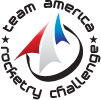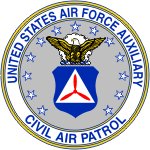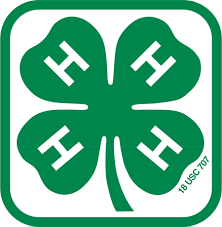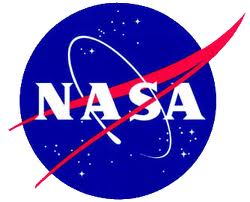| ~~~~~~~~~~~~~~~~~~~~~~~~~~~~~~~~~~~~~~~~~~~~~~~~
National Association of Rocketry
Educator's Newsletter
June 2017
~~~~~~~~~~~~~~~~~~~~~~~~~~~~~~~~~~~~~~~~~~~~~~~~ |

NAR is older than NASA
In a recent radio interview I was telling a local station about the TARC qualification launch our rocket club was hosting and, in explaining what NAR was, I incidentally mentioned NAR was older than NASA. The interviewer was impressed and diverted into that story. I told him NAR was formed in late 1957 "to help students safely learn about building and flying model rockets"
http://www.nar.org/about-nar/ and later, with the start of the 1958 fiscal year, NASA officially began "for America to explore space." The space program enhanced the growth of NAR sport rocketry through the sixties up to the moon landing and inspired many kids to become scientists, myself included. I concluded the interview with the point TARC is currently doing what the moon race did then, motivating kids with a rocketry competition. It's interesting to note, back then NAR grew along with NASA flight activity; but now, even with NASA in a much more modest mode, NAR membership is at a record high. TARC and other student launch programs, as well as all the classes with rockets you teachers present, are keeping the youth's fascination with STEM on ascent.
Aim high!
Vince Huegele
NAR Education Chairman
|
|
 2017 Team America Rocketry Challenge (TARC)
2017 Team America Rocketry Challenge (TARC)
The TARC
http://www.rocketcontest.org/ is the world's largest rocket contest, sponsored by the Aerospace Industries Association (AIA) and the National Association of Rocketry in partnership with AAPT, DoD, NASA, and AIA member companies.
TARC 2017 Finals brought to a conclusion a great 15th year for the Team America Rocketry Challenge. 437 of the 812 teams entering TARC 2017 (from 47 states) submitted qualification flight results; the best 101 of them were invited to attend the national Finals.
Congratulations to the 9-person team from Festus High School, Festus, Missouri, the TARC 2017 champions! We wish the team every success in flying against the winning teams from France, England, and Japan at the Paris Air Show in June (courtesy of Raytheon Company).
Thank you to all the 110 NAR volunteers who worked for two days to set up and run the rocket range. Thanks as well to all the teachers, mentors, and parents who supported all the teams in TARC 2017 throughout the year. And congratulations to all the student teams who travelled to Great Meadow and braved the wet field conditions to fly!
Key elements of the 2018 challenge are:
- Payload is two raw hen's eggs of 55 to 61 grams weight and a diameter of 45 millimeters or less.
- Altitude goal is 800 feet, duration goal is a range of 41 to 43 seconds. For those teams at the Finals invited to make a second flight based on their first-flight performance, the target duration for the second flight at that event will be 1 second less or 1 second more (determined by a coin toss at the student team pre-flight briefing at the Finals). The target altitude for the second flight at the event will be either 775 feet or 825 feet (determined by a coin toss at the student team pre-flight briefing at the Finals).
- Gross weight at liftoff must not exceed 650 grams. Body tubes of two different diameters for the exterior structure must be used. The smaller-diameter of the two body tubes must be used for the upper (egg payload) end of the rocket and must not be greater than 57 millimeters (2.25 inches, corresponding to body tubes generally called BT-70) in diameter but must be large enough to contain eggs of up to 45 millimeters in diameter. The larger-diameter lower body tube must be at least 64 millimeters (2.52 inches) in diameter (body tubes commonly called BT-80 are 66 millimeters) and must contain the rocket motor. The overall length of the rocket must be no less than 650 millimeters (25.6 inches) as measured from the lowest to the highest points of the airframe structure in launch configuration.
- Must be powered only by commercially-made model rocket motors of "F" or lower power class listed on the TARC Certified Engine List. Any number of motors may be used, but the motors used must not contain a combined total of more than 80 Newton-seconds of total impulse based on the total impulse ratings on the TARC list. Motors must be retained in the rocket during flight and at ejection by a positive mechanical means (clip, hook, screw-on cap, etc.) and not retained simply by friction fit in the motor mounting tube.
- Every portion of the rocket must return to earth safely (at a velocity presenting no hazard) connected together using one or more parachutes as its recovery device.
- Teams may use the electrical launch system and the launch pads (with six-foot long, 1-inch rails) provided by the event officials or may provide their own rail or tower system as long as it provides at least six feet of rigid guidance; however, launch rods will not be permitted to be used at the Finals.
- Selection for the Finals will be based on the sum of the best two of up to three qualification flight reports a team submits by April 2.
Thank you to all the parents, teachers, and NAR mentors and volunteers (you) who supported and taught the students in TARC 2017, and congratulations to all the students who competed in it! I look forward to continuing to work with you and with another amazing crop of young students in this rewarding NAR "paying forward" program in its upcoming 16th year.
NAR 4322 L3
NAR TARC Manager
|
Interested in a Fellowship this Summer?
Industry Initiatives for Science and Math Education (IISME), founded in 1985, seeks to transform teaching and learning through industry-education partnerships. IISME exists to address the critical need for a strong, highly skilled workforce in math, science and technological fields. IISME recruits sponsors in California from Alameda, Contra Costa, Marin, Sacramento, San Francisco, San Mateo, Santa Clara, and Santa Cruz Counties. The majority of Fellowships are offered in the Palo Alto, Sunnyvale, Santa Clara and San Jose Area.
This industry-education partnership focuses on teachers as the primary agents for effecting meaningful change in mathematics and science education. IISME provides teachers with experiences and tools they need to adapt their practices and change their schools so that all students are prepared to be lifelong learners, responsible citizens and productive employees. http://www.igniteducation.org/
|
| INSPIRING OTHERS The North Carolina School of Science and Mathematics The North Carolina School of Science and Math Summer Accelerator Program extends to a global audience our 30 years of experience offering innovative courses and opportunities to talented high school students. The Accelerator program offers unique, high-level courses in an innovative format that incorporates both residential, hands-on learning and online education. This summer, explore aerospace engineering by designing and launching your own rocket. Analyze the connection between music and math and compose your own work in Music of the World and the Math Behind It. Uncover the secrets of the dead and real-world excavation methodology in Death and Burial Around the World. Highly skilled faculty focus their talents on building upon the strengths of high-achieving students in advanced science and math topics in the classroom. Student Life Instructors offer a valuable resource and help provide a safe and enjoyable residential experience for students out of the classroom. NCSSM crafts unique college-level academic experiences, as a constituent and flagship high school of the University of North Carolina system, in a setting designed specifically for high school students. Explore complex topics, collaborate with peers from around the globe, and get hands-on experience that will kick start college readiness and career interests this summer.
Innovation Now
How about a daily 90 second radio program that features highlights in aeronautics and aeronautics technology, science, history, innovations, research, and inventions from the aerospace industry? Try this one out! www.innovationnow.us  Civil Air Patrol Civil Air Patrol Collectively, we can have a remarkable impact on a partnering national organization. Take the time to contact a local Civil Air Patrol squadron near you and Pay Forward! You can find a local squadron by entering your zip code or city and state in the online unit locator. Each of these squadrons would welcome your insights and camaraderie! Additionally, the Civil Air Patrol has an Advanced Rocketry Program (and Guide) for those folks who enjoy High Power Rocketry as well as Mid and Low Power...It's a great opportunity to share experiences and Pay Forward!  4-H 4-H The Rocketry School Enrichment and After School Enrichment Program helps students meet Pennsylvania Academic Standards in science. 4-H project books are available for Delaware County, Pennsylvania classroom teachers, home school families, and after school clubs to use with students.
Estes
Student STEM Competition Offers $100,000 Awards
The Siemens Foundation has opened its annual Competition in Math, Science & Technology, with this year's program offering scholarships ranging from $1,000 to $100,000. Administered by the College Board, the competition calls on high school students to submit original research in technology, science, or math, either as individuals or in teams. Regional competitions will be held at six United States universities in November, with finalists competing in Washington, DC, in December.
The application period for the awards is open now. Applications are due Sept. 30.
Promote STEM with Reach For The Stars - National Rocket Competition
There is still time to get your kids into the Reach for the Stars - National Rocket Competition. The deadline for entering is August 31st, which gives museums, schools, scouts and youth groups enough time to get their supplies and run a local event. This year's Competition was kicked off by famed author Homer Hickam in Coalwood, West Virginia at the October Sky Festival - with the original "Rocket Boys" giving the countdown. Special pricing makes the Competition very affordable. In most cases the cost of the rocket kit, supplies for two launches, achievement certificate and Competition registration is less than the list price of the rocket kit alone. A step-by-step video and on-line help, supplied free with order, are available to guide you. The Competition is for ages 10 to adult, with three levels determined by age. Time and supplies are limited, so get started now! More information is at TheRocketman.net.
The National Aerospace Training and Research (NASTAR) Center
Located about 50 minutes by car from the city of Philadelphia, NASTAR is offering teacher development programs at
no cost to teachers
through its non-profit NASTAR Foundation.
NASTAR's teacher programming
emphasis is on fun, experience-based learning that provides teachers with practical tools and activities that they can apply in a classroom environment. Teachers can experience a 3-G suborbital spaceflight simulation in the NASTAR Center centrifuge, ascend to 8,000 feet in the altitude chamber, or learn how airplanes are controlled while piloting the GAT II simulator. The NASTAR Center has added two new teacher professional development programs: "The Atmosphere and Weather" and"Exploring the Solar System" for this summer.
The NASTAR Center is an approved provider of Act 48 continuing education hours by the Pennsylvania Department of Education. Each program is worth 8 hours of continuing education. Programs are offered at no cost to teachers. If you are coming from out of town, they have arranged a meal/room package at a special rate at an area hotel. For enrollment information, contact Greg Kennedy at (215) 355-9100, X 1512, or via email at [email protected]. A program list and registration packet may also be downloaded from the NASTAR Center website, nastarcenter.com. |
| RESOURCES
 NASA Makes Finding Teaching Materials Easy NASA Makes Finding Teaching Materials Easy
NASA's Education Materials Finder will help you locate resources that can be used in the classroom. Users may search by keywords, grade level, product type and subject. With hundreds of publications and Web sites indexed, the finder is a great way to
locate NASA educational resources.
Rocketry School Supplies Provided by Donors
As teachers, you know your students' needs best.
Donorschoose.org is available to provide an avenue for public school teachers to submit project requests for the specific materials their students need to learn.
As their name implies, donors choose which projects to support. Once a project is funded, they deliver the materials directly to the school.
In return, teachers submit photos of the project in use and thank-you notes from students, which are then sent to the project's donors.
|
 National Association of Rocketry (NAR) Offers Teachers and Youth Group Leaders Resources
National Association of Rocketry (NAR) Offers Teachers and Youth Group Leaders Resources
Free resource downloads produced by members who have helped teachers and youth group leaders like yourself all over the United States.
|
| Space History
 Astronaut Edward H. White II became the first American to perform what in NASA parlance is referred to as an Extra Vehicular Activity (EVA). In everyday terms; a spacewalk.
White, Mission Commander James A. McDivitt and their Gemini IV spacecraft were launched into low Earth orbit by a two-stage Titan II launch vehicle from LC-19 at Cape Canaveral Air Force Station, Florida. The mission clock started at 15:15:59 UTC on Thursday, 03 June 1965. On the third orbit, less than five hours after launch, White opened the Gemini IV starboard hatch. He stood in his seat and mounted a camera to capture his historic space stroll. He then cast-off from Gemini IV and became a human satellite. White was tethered to Gemini IV via a 15-foot umbilical that provided oxygen and communications to his EVA suit. A gold-plated visor on his helmet protected his eyes from the searing glare of the sun. The space-walking astronaut was also outfitted with a hand-held maneuvering unit that used compressed oxygen to power its small thrusters. And, like any good tourist, he also took along a camera. Ed White had the time of his all-too-brief life in the 22 minutes that he walked in space. The sight of the earth, the spacecraft, the sun, the vastness of space, the freedom of movement all combined to make him exclaim at one point, "I feel like a million dollars!". Presently, it was time to get back into the spacecraft. But, couldn't he just stay outside a little longer? NASA Mission Control and Commander McDivitt were firm. It was time to get back in; now! He grudgingly complied with the request/order, plaintively saying: "It's the saddest moment of my life!" As Ed White got back into his seat, he and McDivitt struggled to lock the starboard hatch. Both men were exhausted, but ebullient as they mused about the successful completion of America's first spacewalk. Gemini IV would eventually orbit the Earth 62 times before splashing-down in the Atlantic Ocean at 17:12:11 GMT on Sunday, 07 June 1965. The 4-day mission was another milestone in America's quest for the moon. The mission was over and yet Ed White was still a little tired. But then, that was really quite easy to understand. In the time that he was working outside the spacecraft, Gemini IV had traveled almost a third of the way around the Earth. Now, that's a long walk! |
|
| |
 Quick Links... Quick Links...
~~~~~~~~~~~~~~~~~~~~~~~~~~~~~~~~~~~~~~~~~~~~~~~~
|
|
| |
|